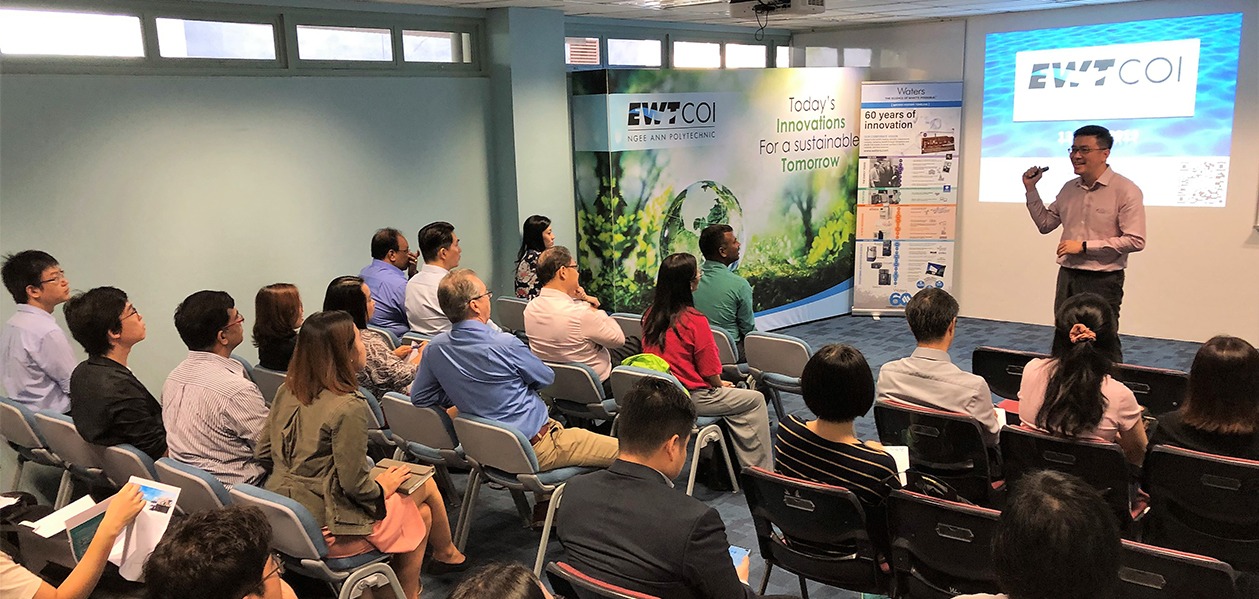Diving into a world of sustainabilityThe Environmental & Water Technology Centre of Innovation aims to help industry partners translate ideas into innovations that support a more sustainable environment.The pursuit of economic advancement has sometimes come at the expense of the natural world. While industrial growth has undoubtedly lifted millions out of poverty over the last few decades, environmental degradation in the form of air pollution and global warming are threatening to erode those gains. Last year went down as the second-hottest year in 140 years, evidence of Earth’s warming trend.
The environmental degradation—climate change, water and air pollution—we are observing is the result of unsustainable practices that have permeated our modern industries. Fortunately, this trend is changing. As market reports have shown, sustainable technologies are on the rise. According to a 2019 report from Allied Market Research, the green technology and sustainability market size is projected to reach US$44.61 billion by 2026, with a compound annual growth rate of 26.5%.
To help companies build technologies that contribute to a more sustainable environment, the Environmental & Water Technology Centre of Innovation was set up in October 2006 at Ngee Ann Polytechnic (NP). In particular, EWTCOI aims to help companies translate ideas into practical solutions using an open innovation model. In this interview, Dr Jason Tang, Director of EWTCOI, shares how the Centre approaches open innovation and how interested parties can tap on their expertise to make sustainable technologies a reality.
1. What does the Environmental & Water Technology Centre of Innovation (EWTCOI) do and what are the key capabilities and areas you focus on?
EWTCOI helps to bridge the gap between research and industry to develop practical and market-driven technology solutions. Our expertise and resources lie in four major areas: water technology, sustainable materials technology, energy efficiency technology and membrane technology.
With a multi-disciplinary team and capabilities that span from chemical and electrical engineering to molecular microbiology, we provide services ranging from product design and feasibility studies to test-bedding and deployment.
2. What is unique about EWTCOI's approach to open innovation?
We use a tiered approach to innovation. This means that companies can gradually scale up the innovation process while working with us. As this approach reduces the risk of failure, it helps companies to build some confidence so that they can adopt an open innovation model for their future projects as well.
At the same time, as EWTCOI is part of Ngee Ann Polytechnic, we can train and certify their workforce to manage the innovations that are being developed. Thus, our approach gives companies an opportunity to involve students in their projects, building themselves a steady flow of talent that can be recruited even before these interns graduate.
3. Kindly share some examples of successful collaborations and how working with EWTCOI has benefited these companies.
One of our collaborations was with a local company called Firmbase, where we were able to prove that the company’s proprietary polymer could be used to make membranes for water treatment. We even produced an actual industrial-sized membrane module and compared its performance against existing membranes in the market, establishing the product’s enhanced capabilities.
We have also worked with a Danish multinational company (MNC) called Grundfos to develop a new energy-efficient distributed pumping system that can be retrofitted into buildings. In this collaboration, we helped to conduct simulation studies that eventually led to a pilot trial where their factories and offices were retrofitted and cooled using that system. We also helped them to scale up the trial by installing it in one of NP’s campus buildings. In both deployments, energy savings of up to 20% were achieved. The energy-efficient system is now being actively marketed not just in Singapore, but regionally as well. Even now, EWTCOI continues to support Grundfos in the design and commissioning of new projects.
4. What kinds of companies or collaborators are you looking to work with?
EWTCOI is actively looking for companies that are committed to building their innovation capabilities. We can work with start-ups, small- and medium-sized enterprises (SMEs), large local organisations and even MNCs, if they share the same vision and willingness to push out new solutions into the market.
5. How can companies begin working with EWTCOI?
Every collaboration begins with a meeting to establish what the objectives of that project are so that both parties (the company and EWTCOI) can be aligned. It would be best for companies who want to work with us to be familiar with the market sector they wish to penetrate so that our discussions can be more focused and fruitful. This familiarity will help to ensure that the solution(s) we propose can be supported by the market that it is intended to reach.

